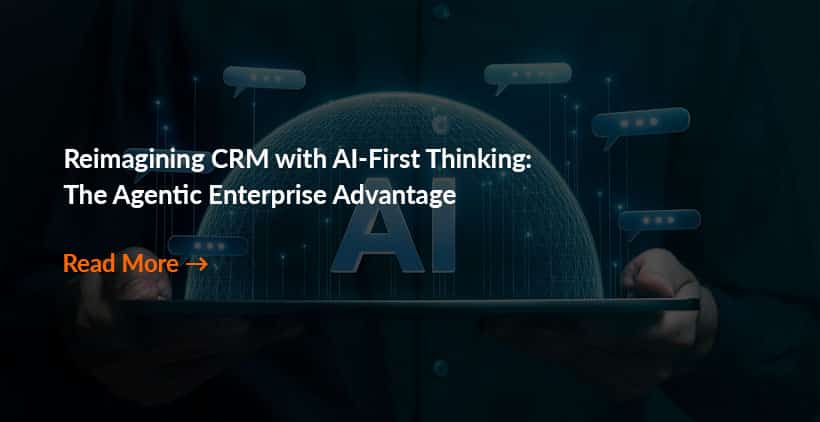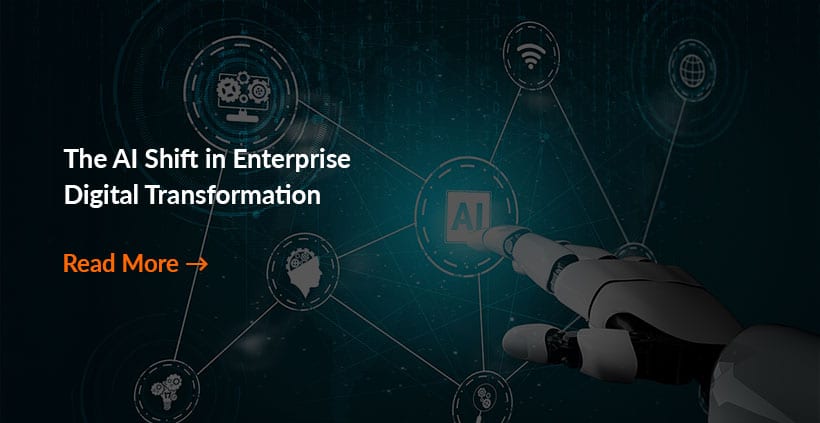
In the modern business landscape, brand loyalty depends not just on what a business delivers, but also on how it provides that offering. As expectations get shaped by instant gratification and seamless digital interactions, Customer Experience (CX) is built by everything an organization does to engage and provide value to its customers. Enterprise technology services play a key role here. From integrated customer data systems to AI-enabled solutions, modern tech capabilities have become the engines powering faster, friendlier, and more consistent experiences across every touchpoint.
Innovation Engines for 2025 and Beyond
The innovative solutions redefining businesses have moved above the horizon to redefine how enterprises create value and stay ahead. These include:
Speed
Customers want real-time responses and resolutions powered by AI-powered chatbots, automated workflows, and predictive analytics. They allow businesses to anticipate and address queries instantly, giving them an edge.

Convenience
Enterprise frameworks can integrate voice, chat, mobile, and web-based interactions into unified interfaces to serve customers via their preferred channel. Similarly, APIs and cloud-native architectures support frictionless, on-demand access to services anytime, anywhere.
Consistency
Cloud-based CRM systems and ERP integrations ensure that all functions, including marketing, sales, support, and logistics, operate from a single version of truth even as they are tailored for diverse personas. This is vital for consistent interactions and fewer disconnects across customer journeys.

Human Touch
Empathy and authentic connections are not to be undermined in a digital-first world. AI-assisted agents and sentiment analysis tools help human teams deliver personalized, attentive service at scale. By surfacing context in real time, technology enhances (not replaces) the human element.
Enterprise Technology as the Enabler
Every seamless customer interaction is underpinned by an enterprise technology layer that orchestrates speed, personalization, and scale across the CX lifecycle. Some of these are:
AI-Powered Contact Centers
Customer contact centers have transformed beyond responding to calls and messages. They employ modern tech such as AI, NLP, and real-time analytics to gauge intent, route interactions thoughtfully, and assist human agents with relevant insights, critical to scaling high-quality, cross-channel service even during peak volumes.

CRM with Predictive Analytics
Ahead of storing customer data, modern CRM systems help anticipate what a customer might need next. Salesforce uses its AI engine, Einstein, to analyze customer behavior and surface insights such as churn risk, buying intent, or upsell opportunities. Teams can then engage more proactively and personally across accounts, turning every interaction into a chance to build stronger relationships.

Low-Code Platforms for CX Innovation
Companies can leverage low-code platforms to design and implement applications that help them understand their customers better. It may be a service request form, a feedback channel, or a real-time support chat interface; these tools accelerate CX innovation cycles. With prebuilt components, visual development, and integration capabilities, businesses can quickly respond to evolving customer needs, test ideas faster, and progressively boost retention.

Intelligent Automation
RPA creates powerful workflows for handling repetitive tasks with speed and precision, right from resolving billing discrepancies to updating customer records. AI complements automation with intelligence, ensuring that bots understand context, make efficient decisions, and respond to natural language. Meanwhile, teams can focus on nuanced tasks like resolving escalations, creative problem-solving, and managing sensitive interactions.

Experience Management Services
Platforms such as Qualtrics and Medallia help organizations capture feedback from various sources for actionable insights. They check CSAT scores, detect gaps, identify trends, and highlight root causes of dissatisfaction. By linking experience data (X-data) that captures how people feel (based on survey results, direct feedback, and social media sentiment) with operational data (O-data) on what happened (transaction, purchase history, delivery time, churn rate), businesses can continuously improve CX with decisions rooted in what customers feel and want.

Enterprise Integration for 360-degree Customer Views
Customers don’t see business units in a company. They see one brand face. Enterprise integration connects systems across sales, service, marketing, and operations, creating a unified view of each customer’s requirements. As real-time data flows through CRM, ERP, and support platforms, teams can deliver more relevant, timely experiences. This full-circle visibility helps personalize every interaction, whether it is a support call, a marketing campaign, or a loyalty reward.
CX in a Digital World: Where Technology Meets Trust
The success of modern CX strategies lies in how they augment human capabilities with technology. Companies must design experiences that feel personal, relevant, and intuitive at every engagement point. AI, automation, and integrated data ecosystems simplify this, and with the human element, those experiences become even more meaningful. When marketing, sales, and service function in synchronization, and when tech helps to anticipate preferences, brands move to the next efficiency level. They build long-lasting associations with customers. The future of CX belongs to those who care about more than just service delivery, shaping customer journeys with intelligence, empathy, and consistency.




